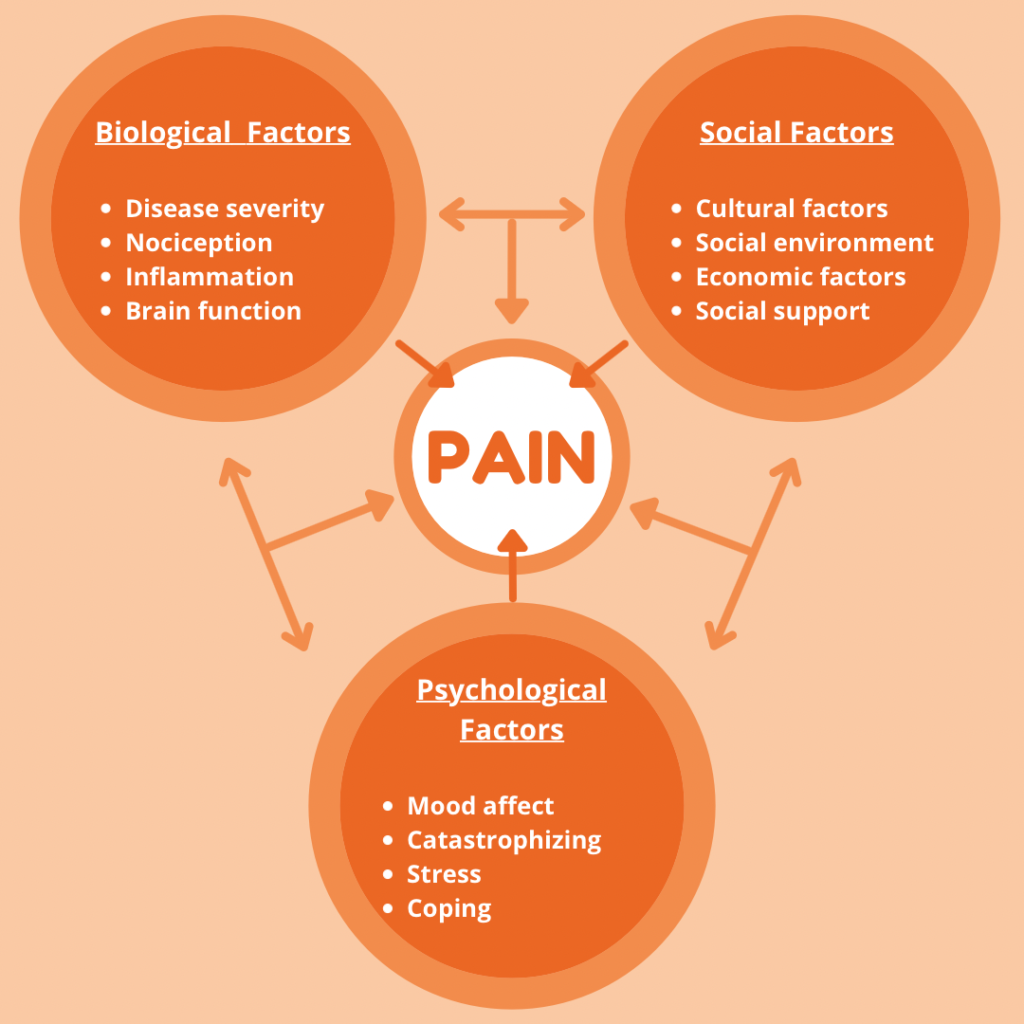What is pain?
Clients and customers often attend for massage therapy or Sports Therapy at our clinic in Truro because they are experiencing some degree of pain. But what is pain and why do we experience it? In this blog we explore some theories surrounding this.
Understanding Pain
Pain is common and we will all experience it at some point in our life’s. In the mid 90s when Debbie was training to be a nurse, she remembers the lecture on pain. The lecturer went around the room and asked us each to describe what the worst pain we had experienced and the least pain we had experienced was. It varied for everyone – for some their broken toe was the worst, for others it was the least. Others described experiences that we are sure many of us quietly hoped we would never experience. The reason for that lecture has stuck with me throughout my career as a nurse and as a massage therapist… pain is whatever the person says it is.
In the medical profession we use Visual anolog scores to understand and subsequently try and treat pain. You probably know the common one “please give your pain a mark out of 10, 10 being the worse, 1 being the least”. I have heard rumours that people believe if they say 10 it means they will get treatment quicker, this is not necessarily the case but can be a very useful tool. Other descriptive terms of pain can be mild, moderate or severe.
Pain is a vital function of the nervous system. We associate it with history on our life’s – whether this being the knowledge that we shouldn’t touch something hot or knowing it’s time to book in for some sports therapy or a massage because our backs are starting to niggle again.
It often signals injury or disease, although this is not always the case. It can alert us to harmful stimuli. Persistent pain can affect our mental health and cause us to take time off work.
Signals travel through the nerves, through the spinal cord and into your brain. Your brain will understand them as either harmful or not harmful. You’re brain then decides if pain is an appropriate reaction. Pain is then an output of the brain but it’s always nearly in response to an input. The brain can also reduce the incoming signals by triggering your brain’s own natural pain relief.
What is Pain?
Firstly, The International Association for the Study of Pain (IASP) defines pain as an unpleasant sensory and emotional experience associated with actual or potential tissue damage (Kuttner, 2010).
There are two types of pain, known as acute and chronic pain.
Acute Pain
Acute pain is often described as a time limited response to a noxious stimuli which either threatens or actually causes damage to normal tissues (Pope et al., 2017). Acute pain usually occurs from a traumatic injury, which could be anything from a burn, fracture, childbirth or surgery. It is a sudden pain which usually does not last any longer than 6 months. Acute pain is often a pain we think of as a protective pain…
Chronic Pain
Chronic pain is defined as lasting at least 3 months, and of course, become more complicated than acute pain (Lumley et al., 2011). The medical science of persistent pain is varying and evolving. Some types of pain can be related to conditions or diseases within specific tissues… examples including, but limited to:
- Joint degeneration (osteoarthritis)
- Inflammation (e.g., rheumatoid arthritis, inflammatory bowel disease)
- Tumor growth (cancer pain)
- Damaged nerves (neuropathic pain)
- Tissue anoxia (sickle cell disease)
When chronic pain occurs, this can also lead to opposing factors, such as stress affecting the body which causes physical conditions. These may include tense muscles, lack of energy, and adaptation in appetite (Turk & Okifuji, 2002). In addition, chronic pain can also cause emotional effects, which may involve anxiety, anger, depression and fear of being re-injured (Turk & Okifuji, 2002).

How does our Brain/Body know we are in Pain?
Pain in complex but let’s give this a go! ……..
Within our bodies we have nerve cells called Nociceptors (the pain receptors). These nociceptors send signals into our spinal cord when they are stimulated by sources such as heat, chemicals, or pressures.
Pain receptors (nociceptors) form ends of neurones or nerve cells which are connected by long nerve fibres or axons to the spinal cord, once stimulated they send signals up the spinal cord.
The dorsal horn within the spinal cords is where electrical signals are transmitted across junctions (or synapses) by chemical messengers (or neurotransmitters) to pass signals onto the brain.
Within the brain the Thalamus sorts signals into different cortexes as follows
- The somatosensory cortex (responsible for physical sensation)
- The frontal cortex (responsible for thinking)
- The limbic system (our emotions)
At the end of this our response is triggered – whether that be shouting out, feeling annoyed or emotional.
Why does rubbing it make it feel better?
“Beta fibres conduct impulses/ signals much faster than others and therefore inhibit transmission to (A delta and C fibres and therefore closes gate – why it feels better when we rub it”. Let’s find a less clinical way of writing this…….
What do we often find ourselves doing if we knock or bang something? – that’s right, we rub the injured area.
As an example, if we knock our funny bone in the elbow, we often instantly rub our elbow, and course we often do have a bit of a laugh! When we rub the painful area, we disrupt and prevents the signals through the nerves travelling to the brain. Therefore, when rubbing the painful area, the brain can reduce the incoming signals by triggering your brain’s own natural pain relief.
How do we Measure Pain?
We often measure pain as a subjective assessment to monitor how much pain you were experiencing at that present time, which often helps to gauge changes in the experience of pain. However, it’s also very important to also consider thoughts and feelings as this can have a significant impact to your pain.
How can Massage and Sport’s Therapy help Pain?
We have written several previous articles about this, click the links below to read more.
If you would like more advice please email our sports therapist Lauren@keherentherapy.co.uk or Keherens Therapy own and massage therapist debbie@keherentherapy.co.uk
Or if you want to book a treatment use the button below

